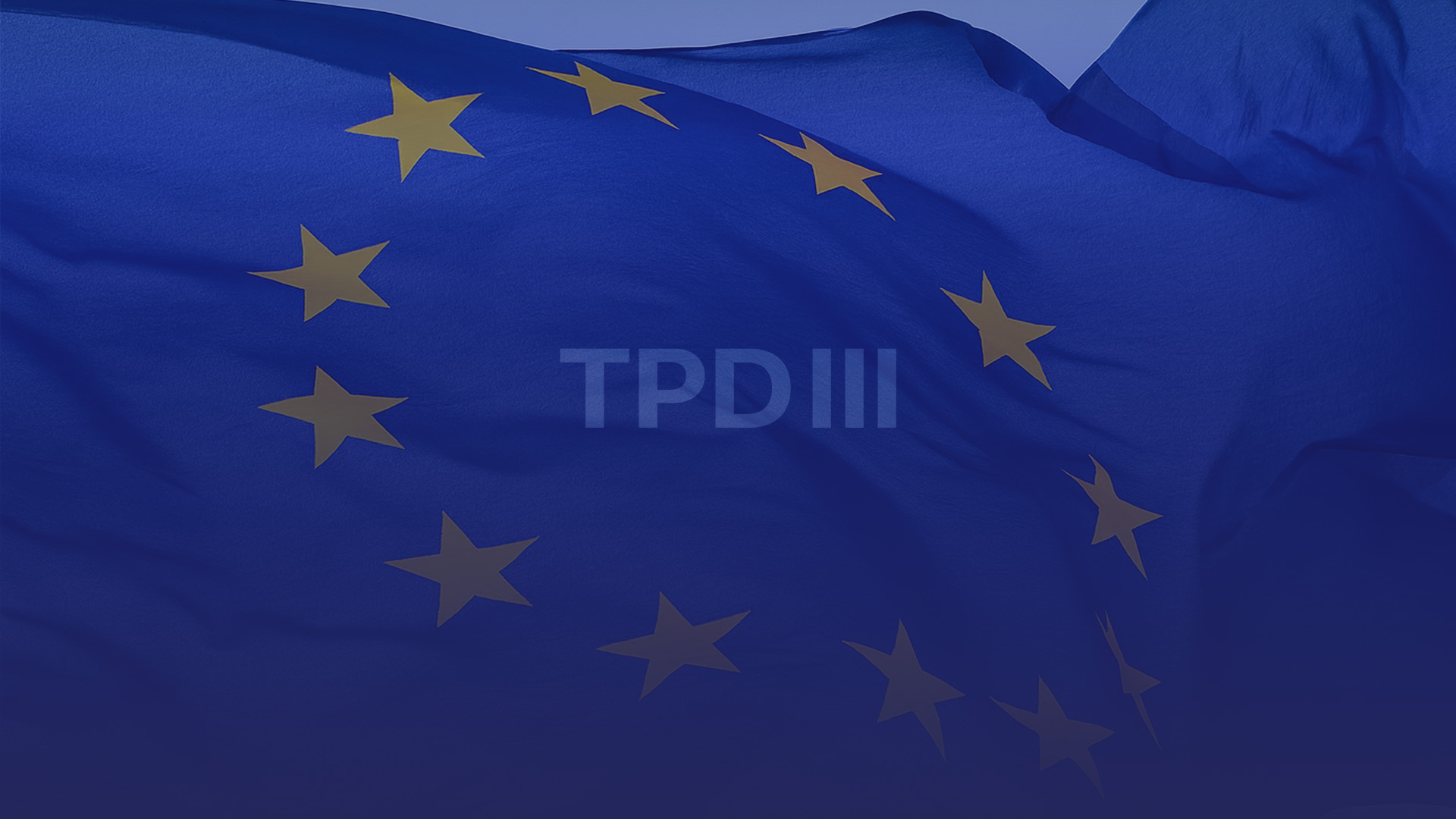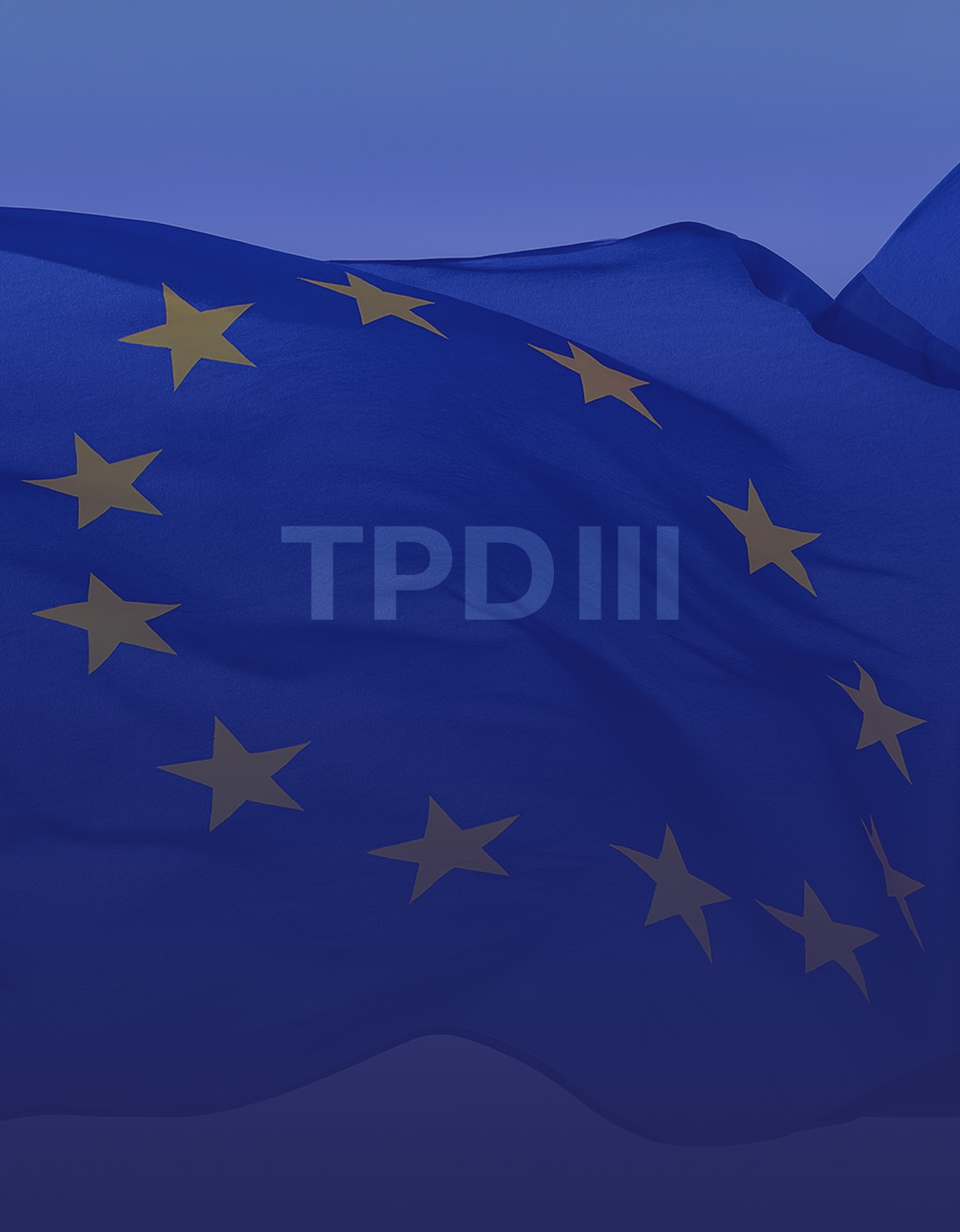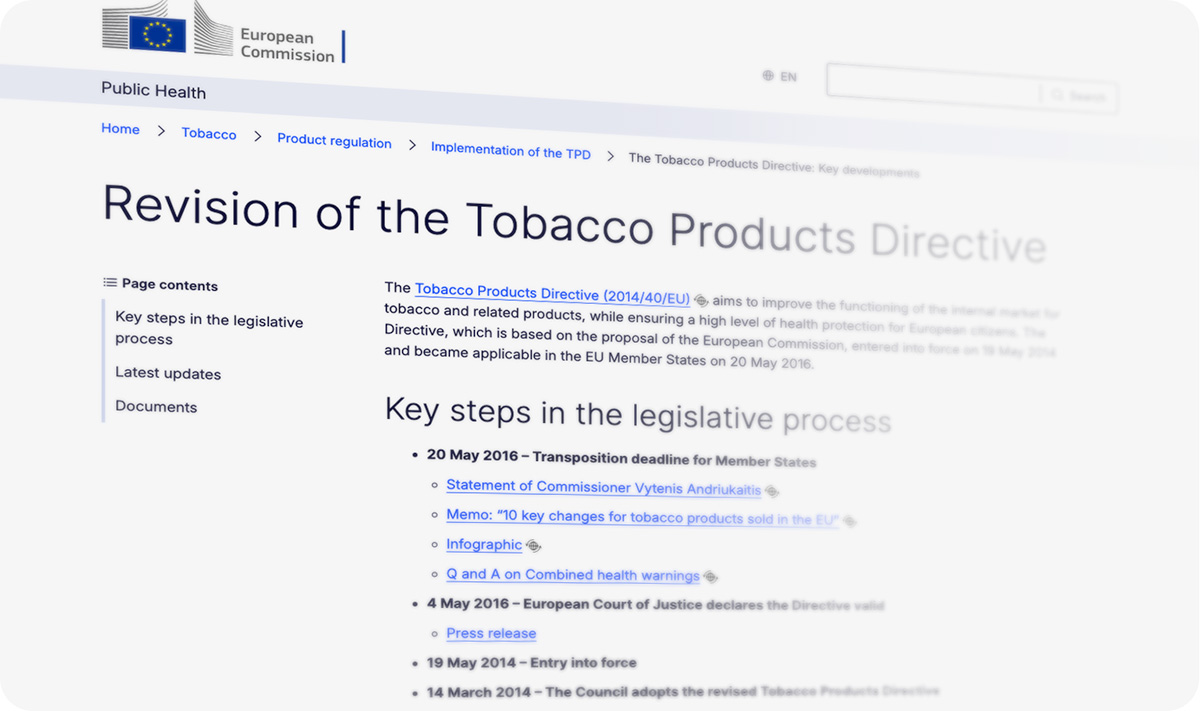

As the revision of the EU Tobacco Products Directive III (TPD III) progresses, Europe’s e-cigarette industry is entering a new regulatory era.
This article summarizes the key directions, regulatory priorities, and market implications of the upcoming framework, offering forward-looking insights to help brands and stakeholders prepare strategically before the legislation takes effect.
Background: The Evolution of the TPD
The Tobacco Products Directive (TPD) serves as the cornerstone of the European Union’s regulatory framework for tobacco and nicotine-containing products. Its purpose is to harmonize market rules across Member States, reduce youth appeal, and safeguard public health.

Timeline
2001 – TPD I (Directive 2001/37/EC): Established the foundational rules for cigarette composition, tar and nicotine levels, packaging, and advertising.
2014 – TPD II (Directive 2014/40/EU): For the first time, extended regulation to include e-cigarettes and heated-tobacco products. The directive came into full effect in 2016.
2025 – TPD III (Draft in Progress): The European Commission and EU health ministers are preparing the next revision, with a legislative proposal expected in early 2026. The new directive aims to strengthen oversight of e-cigarettes, nicotine pouches, and other novel nicotine products.
While TPD II brought structure and safety improvements to the EU nicotine market, the rapid emergence of nicotine pouches, disposable vapes, and herbal heated products has revealed significant gaps in its scope and consistency.
These limitations prompted the European Commission to launch a comprehensive review to build a more forward-looking, harmonized, and sustainable regulatory framework.
Limitations and Shortcomings of TPD II
Regulatory Gaps for New Product Types: TPD II did not fully cover nicotine pouches, herbal heated products, or disposable vapes, forcing Member States to rely on fragmented national legislation.
Inconsistent Enforcement: Countries differ in how they regulate disposables, flavor bans, labeling, online sales, product notifications (e.g., EU-CEG), and excise rules. These variations undermine market coordination and increase compliance complexity.
Rising Youth Protection Pressure: Sweet or fruity flavors and visually appealing packaging remain attractive to young users. Many Member States have already tightened national restrictions, highlighting the need for a unified EU-level approach.
Insufficient Data Transparency and Scientific Oversight: Although TPD II capped nicotine at 20 mg/mL, it lacks dynamic assessment mechanisms for emissions, toxicology, and long-term health impacts.
Traceability Gaps and Illicit Trade: The current tracking system applies mainly to combustible tobacco. E-cigarettes and novel nicotine products remain largely outside its scope. Tax and enforcement disparities have created space for grey-market activities.
Environmental Responsibility Lacking: Disposable devices generate significant plastic and battery waste, yet producer responsibility (EPR) and eco-design requirements remain underdeveloped.
TPD III: Revision Directions and Regulatory Focus
The central aim of TPD III is not merely to update existing rules but to establish a long-term regulatory structure capable of managing next-generation nicotine products.
The revision is expected to address product definitions, reporting systems, packaging, flavor control, taxation coordination, traceability, and environmental accountability. It reflects a clear shift toward scientific rigor and policy consistency.
1. Broader Product Scope
TPD III will explicitly include nicotine pouches, herbal heated products, and disposable vapes, closing long-standing regulatory gaps and ensuring that all nicotine-delivery categories fall under one transparent framework.
2. Toward Regulatory Harmonization
Disparities in national implementation have long hindered the EU’s internal market. The new directive seeks to standardize product notification, packaging, labeling, and traceability systems, reducing redundant testing and certification costs. This will enhance policy alignment and ensure consistent public-health protections across Member States.
3. Flavor and Product Appeal Management
Several EU countries have already enacted national flavor bans. TPD III is expected to introduce a bloc-wide framework that limits flavor categories to tobacco and menthol while restricting sweet, fruity, and beverage-inspired profiles to reduce youth appeal. For brands, future innovation will need to balance sensory design with compliance obligations.
4. Nicotine and Emission Standards
Beyond maintaining the 20 mg/mL nicotine limit, TPD III is expected to strengthen scientific oversight of nicotine delivery, aerosol emissions, and exposure levels. Manufacturers may be required to provide more comprehensive toxicological and clinical data to support risk assessment and ensure that product safety evaluations are transparent and evidence-based.
5. Packaging and Labeling Rules
Health warnings may occupy a larger portion of packaging, while color, gloss, and imagery could face tighter restrictions. The EU is also exploring the introduction of plain-packaging measures and broader disclosure of ingredient and emission information to enhance product transparency.
6. Online Sales and Cross-Border Distribution
To address illicit online trade and cross-border inconsistencies, TPD III will strengthen e-commerce accountability through mandatory age verification and a unified EU-wide Track & Trace 2.0 platform. This system will improve traceability, reduce tax evasion, and support a fairer distribution environment.
7. Environmental and Recycling Responsibilities
Aligned with the European Green Deal, TPD III will place greater emphasis on the sustainable management of disposable products. Manufacturers will likely face stricter Extended Producer Responsibility (EPR) obligations covering recyclability, battery recovery, and waste collection.
Market Impact of TPD III
TPD III will reshape Europe’s e-cigarette regulatory and competitive landscape. A harmonized framework will bring greater clarity and fairness, but will also increase compliance requirements in testing, labeling, and disclosure. The industry’s focus will gradually shift from speed and volume to quality, safety, and traceability.
How Brands Should Respond
In anticipation of TPD III, Hangsen recommends that e-cigarette brands and operational teams partner with manufacturers possessing strong compliance expertise and proactively align product portfolios with future regulatory standards. Integrating compliance considerations into early-stage product planning can minimize future adjustments and accelerate market readiness once new requirements are enforced.
While the upcoming directive may reshape the competitive order, it also presents a window of opportunity. Brands that act early and prepare strategically will be best positioned for sustained growth.
For inquiries or cooperation regarding compliant tobacco flavors and regulatory-ready product solutions, please contact us at service@hangsen.com